This blog is a continuation of the “Eyes and Brain in the Group” blog. As I was attending the Social Thinking © conference in Long Beach in January, I realized that my “Expected and Unexpected Behaviors” lessons were incomplete. In the lessons I used several visuals for Expected and Unexpected Behaviors. I talked about having “good thoughts” when I client demonstrated expected behaviors in the clinic and “bad thoughts” when he exhibited “unexpected behaviors.” But I hadn’t really used a visual to make it explicit. During the conference, I noticed Ryan Hendrix (one of the presenters) use a red thought bubble for “bad thoughts” and a green thought bubble for “good thoughts.” I felt a figurative light bulb go on in my brain. Wouldn’t it make more sense to hold a green thought bubble over my head than say “I am having good thoughts,” since you don’t always express your thoughts verbally. Just holding up the green bubble without verbally interrupting the session would give the client the positive feedback and the acknowledgment while continuing with your lesson.
So of course, the next weekend I had to make the two thought bubbles. I used a generic thought bubble shape I found online and outlined one red and the other green with Do-A-Dot markers to make them bold. I wrote “Yay!” with a smiley face on the green thought bubble and “Oh, no!” with a sad face on the red thought bubble.
I also made a generic (white) thought bubble that said, “I am thinking about __.” I put some Velcro underneath so I child could attach a picture of something/ someone they were thinking about. To carry it further, I also made a “talking bubble” and laminated it so you can write on it with a dry erase marker. The client could write what they were thinking about on the “talking bubble.” For example, if they were thirsty and thinking about juice, they would write, “I want some juice” on the “talking bubble.”
One of my clients in particular has difficulty realizing that people have different thoughts. What is in his brain isn’t necessarily in mine. So if he is thinking about “m&ms,” he needs to say it so I know what he’s thinking about instead of demonstrating “unexpected behaviors” such as screaming or crying. So having two thought bubbles (one for him and one for me), each showing that we are both thinking about different things (his has m&ms, mine has the activity we are doing) makes it explicit for him.
I have to credit Ryan Hendrix for the ideas listed above. I also used Jill Kuzma’s thinking and speech bubbles. You can find the templates on her blog. She has some additional ideas and activities that are great to carry on the lessons using thought bubbles.
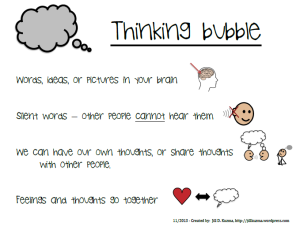
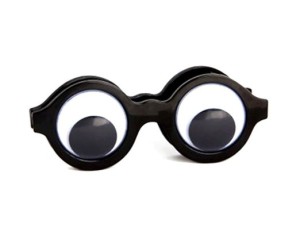
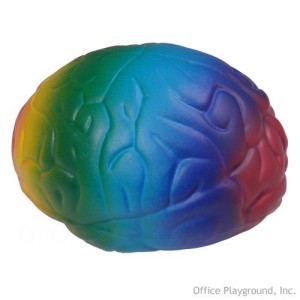
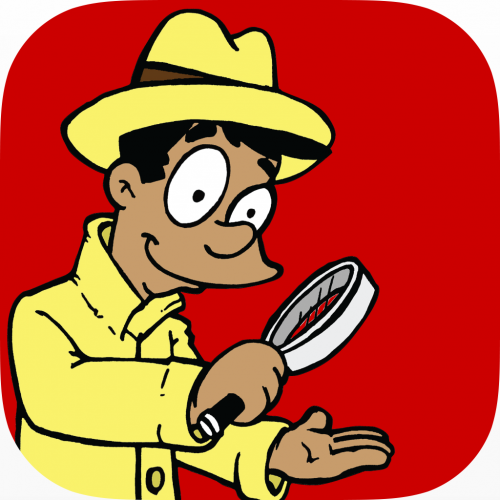 Every one of us is a Social Detective! We are good social detectives when we use our eyes, ears, and brains to figure out what others are planning to do next or are presently doing and what they mean by their words and actions.
Every one of us is a Social Detective! We are good social detectives when we use our eyes, ears, and brains to figure out what others are planning to do next or are presently doing and what they mean by their words and actions.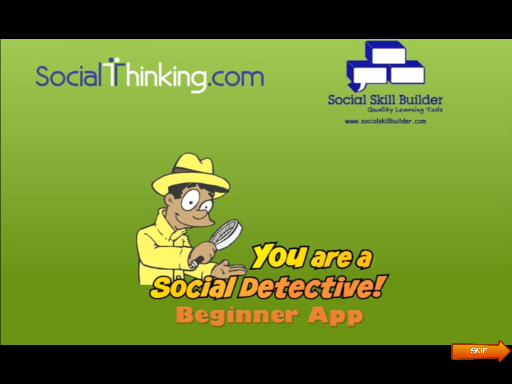
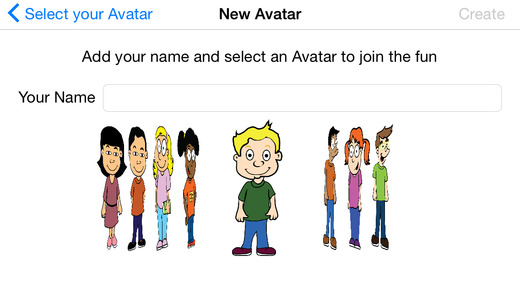
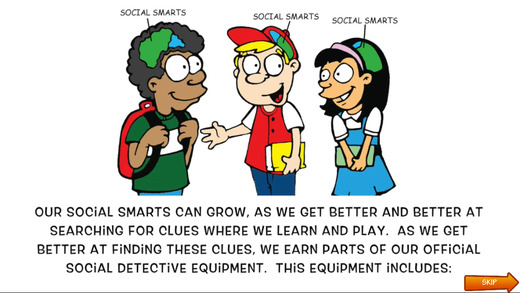
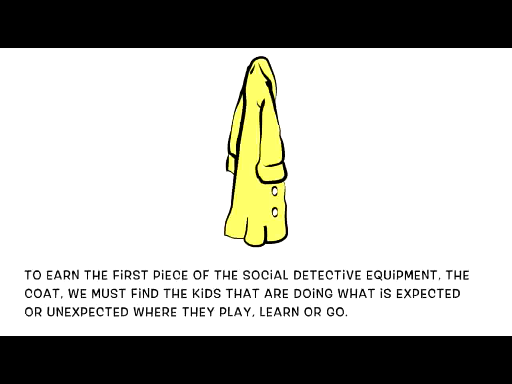
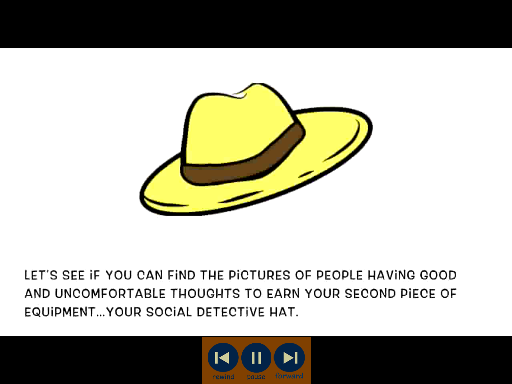
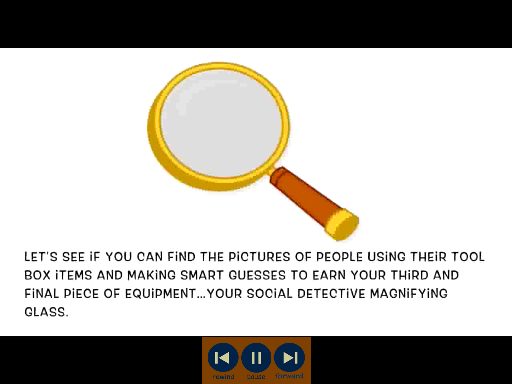
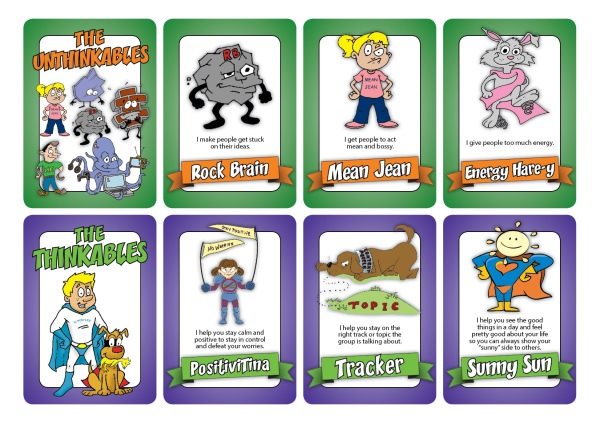
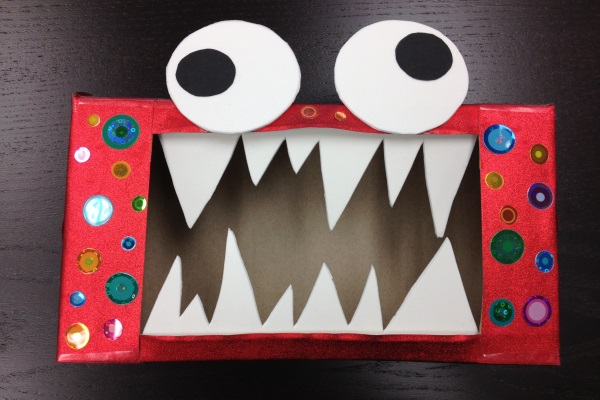
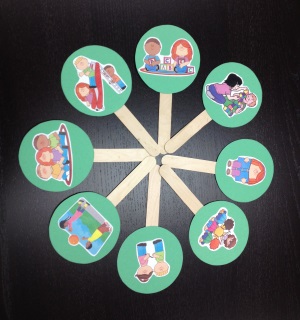
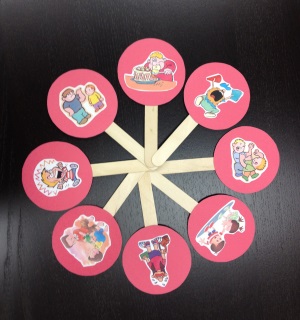
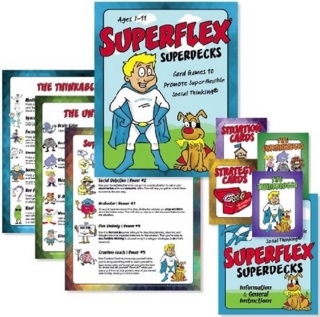 Are you having trouble squeezing in time to develop novel therapy materials for your social thinking groups? You’re not alone. With a crazy schedule of both private and public school speech therapists, this new pack of cards is an incredible time-saver.
Are you having trouble squeezing in time to develop novel therapy materials for your social thinking groups? You’re not alone. With a crazy schedule of both private and public school speech therapists, this new pack of cards is an incredible time-saver.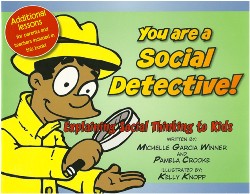 Getting started with the Social Thinking Curriculum by Michelle Garcia Winner is always a challenge. Most of us, Speech-Language Pathologists, fall under two distinct categories: 1) “Read first Therapists” that like to read and study a program until it we can recite it in our sleep before we will begin to implement it on our students, 2) “Try it out first Therapists” that will try to figure out the program while we implement it on our students.
Getting started with the Social Thinking Curriculum by Michelle Garcia Winner is always a challenge. Most of us, Speech-Language Pathologists, fall under two distinct categories: 1) “Read first Therapists” that like to read and study a program until it we can recite it in our sleep before we will begin to implement it on our students, 2) “Try it out first Therapists” that will try to figure out the program while we implement it on our students.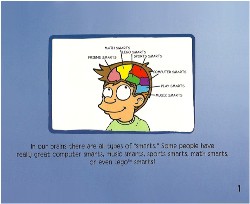
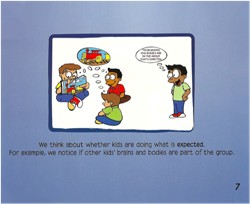 Versus
Versus 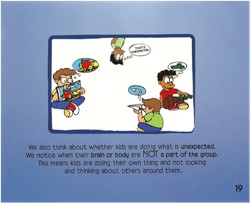
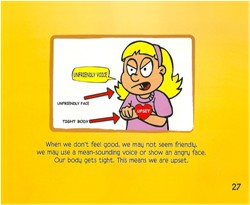 The book also explains “being upset” in explicit physical terms (mean sounding voice, angry face, body gets tight) so children can identify their own states when they get upset.
The book also explains “being upset” in explicit physical terms (mean sounding voice, angry face, body gets tight) so children can identify their own states when they get upset.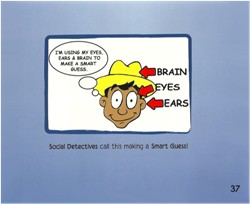 Another challenge a lot of my little ones have is identifying and differentiating between peers who are nice and friendly and others who say or do mean things. The book has tables (page 44 and 45) to help the child identify and list characteristics of a “nice person” and a person who is “not nice to talk to.” In addition, the book also has a glossary with definitions of the Social Thinking vocabulary for quick reference. The book also includes three lesson plans at the end of the book for “Expected Vs Unexpected Behaviors,” “Social Spy,” and “Social Detective.”
Another challenge a lot of my little ones have is identifying and differentiating between peers who are nice and friendly and others who say or do mean things. The book has tables (page 44 and 45) to help the child identify and list characteristics of a “nice person” and a person who is “not nice to talk to.” In addition, the book also has a glossary with definitions of the Social Thinking vocabulary for quick reference. The book also includes three lesson plans at the end of the book for “Expected Vs Unexpected Behaviors,” “Social Spy,” and “Social Detective.”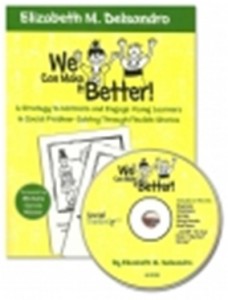 A majority of my caseload includes preschool and early elementary aged students. Many of them are diagnosed with Autism or demonstrate social skill deficits. If you’re like me and work with the younger students, you know how hard it is to find social skill programs that are structured, but still age appropriate. For the last year or so, the Social Thinking Curriculum has been the go-to program for many therapists to build social skills. However, finding materials that are appropriate for this age group has always been a challenge. In many settings including the public schools the Social Thinking curriculum isn’t incorporated until upper elementary or middle school years. Does that mean that the Social Thinking Curriculum isn’t appropriate for the preschool age group? In my opinion the preschool and early elementary age group is ideal to begin teaching the Social Thinking Curriculum. Introducing the Social Thinking vocabulary and concepts early on makes them a part of their everyday lives and routine. It does present unique challenges though: 1) teaching the vocabulary in ways that makes sense to younger students and 2) preparing lessons that are age appropriate, engaging and flexible.
A majority of my caseload includes preschool and early elementary aged students. Many of them are diagnosed with Autism or demonstrate social skill deficits. If you’re like me and work with the younger students, you know how hard it is to find social skill programs that are structured, but still age appropriate. For the last year or so, the Social Thinking Curriculum has been the go-to program for many therapists to build social skills. However, finding materials that are appropriate for this age group has always been a challenge. In many settings including the public schools the Social Thinking curriculum isn’t incorporated until upper elementary or middle school years. Does that mean that the Social Thinking Curriculum isn’t appropriate for the preschool age group? In my opinion the preschool and early elementary age group is ideal to begin teaching the Social Thinking Curriculum. Introducing the Social Thinking vocabulary and concepts early on makes them a part of their everyday lives and routine. It does present unique challenges though: 1) teaching the vocabulary in ways that makes sense to younger students and 2) preparing lessons that are age appropriate, engaging and flexible.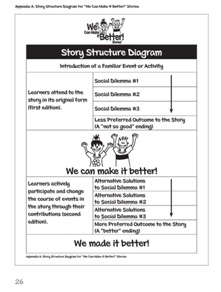 Appendix A describes the story structure. The first edition contains the social dilemmas, while the second provides solutions so the ending is a preferred ending.
Appendix A describes the story structure. The first edition contains the social dilemmas, while the second provides solutions so the ending is a preferred ending.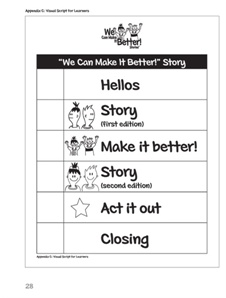 Appendix C provides a visual script for the lesson.
Appendix C provides a visual script for the lesson.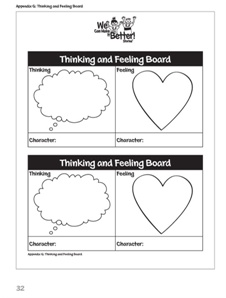 Appendix G provides a visual link between people’s thoughts and their feelings. This could be a very powerful and versatile tool. It could be used for far more activities than just the lessons in this program.
Appendix G provides a visual link between people’s thoughts and their feelings. This could be a very powerful and versatile tool. It could be used for far more activities than just the lessons in this program.